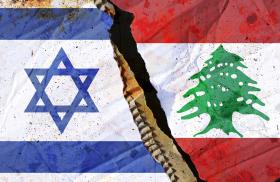
A Return to the Convoy Strategy and Projection of Unity

The muqawama are trying to put squabbles over the utility of convoy bombings behind them and are making a concerted attempt to demonstrate inter- and intra-group unity.
In the aftermath of Pope Francis’ visit to Iraq, the muqawama have held off rocket attacks despite significant threats of escalation following the February 26 U.S. airstrike, but have ramped up the convoy bombing campaign. Indeed, the roadside bombing effort against Iraqi trucks carrying coalition supplies is more professionally publicized than before, and the muqawama seem to be making an effort to appear better coordinated.
One change is the quality of new roadside bombing videos. Pre-March 2021 convoy bombings were rarely filmed. When they were, the videos were of very poor quality. Some may have been recycled, or appear to have depicted the same attack from different vantages, claiming them as separate incidents. Since the beginning of March 2021, the footage has become better quality, with closer-in footage being used.
There appears to be a concerted attempt to project maximum influence countrywide while demonstrating inter- and intra-group unity. On March 11, bombings were claimed by Ashab al-Kahf (AK) and Saraya Awliya al-Dam (assessed as affiliated with Asaib Ahl al-Haq) [Editor's note, later assessed by Militia Spotlight to be closer to Kataib Sayyid al-Shuhada], Saraya Qasem al-Jabbarin (assessed as connected to Kataib Hezbollah, or KH), and the “International Muqawama.” The latter is newer, and its affiliation is unknown at this time, but its proclaimed internationalist outlook and the timing of its appearance suggest that it may have a KH nexus. Its logo (particularly the rifle) appears stylistically closer to IRGC iconography than muqawama representations.
This apparent unity of effort was quickly captured by Sabereen news, which posted two graphics highlighting the breadth and geographic reach of the groups involved. The first graphic shows the location of three of the March 11 bombings, noting that AK claimed one attack and the International Muqawama another. Map graphics in this style have become a new favorite of Sabereen, used to illustrate (for example) the locations and scale of the four rocket attacks on coalition operating locations between February 15 and March 3, 2021, and the locations and nature of attacks on Saudi Arabia from Yemen.
Later in the day, Sabereen published another graphic showing the logos of all of the facade groups that had claimed attacks on March 11. The graphic included an English-language message. Sabereen has a number of contributors with varying English-language skills and likes to post messages in English purporting to directly menace coalition forces.
Regardless of the reality, the propaganda objective seems to be intended to demonstrate unity and reach, in contrast to spats over the “convoy strategy” in January and February 2021. As noted in a previous alert, AAH previously belittled KH’s convoy attacks as merely hitting “tuna and noodles” (i.e., coalition consumables, of little importance). The main fasail within the Iraqi Resistance Coordination Committee (al-Haya al-Tansiqiya lil-Muqawama al-Iraqiya, or Tansiqiya for short) seem to be signaling that all groups are now "on board" with the method of convoy attacks.
This may be a temporary compact, or it may signal a deeper agreement over what constitutes acceptable risk in terms of endangering Americans and drawing U.S. retaliation in the aftermath of the February 26 U.S. retaliatory strike on KH. If the latter, this may suggest Iranian intervention of some kind during the interregnum created by the pope's visit.






